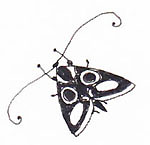two genocide warnings
two genocide warnings

Two Genocide Warnings
by J. B. Gerald
Canada
 Nunavit: in 2014 most Canadians, individually, are strongly resistant to genocide. Yet, on May 8, 2013, Night's Lantern noted the tuberculosis rate for Inuit people as 186 times the rate for non-Aboriginal people. After James Anaya's visit in early October, 2013, the UN Special Rapporteur on Indigenous rights found the Aboriginal peoples "in crisis." The causative problem remains: successive Canadian governments serve the interests of resource extraction corporations rather than the people of the land. In a territory where the suicide rate of Inuit is thirteen times the national average, 45 or more people committed suicide in 2013. Young men commit suicide at 40 times the rate of those in southern Canada. This happens when a culture is being destroyed. Ongoing genocide warning. Refusing to successfully remedy a long standing emergency which has become a condition of Canadian society, the current government is in violation of the Convention on Genocide, Article II, c,: Deliberately inflicting on the group conditions of life calculated to bring about its physical destruction in whole or in part.
Nunavit: in 2014 most Canadians, individually, are strongly resistant to genocide. Yet, on May 8, 2013, Night's Lantern noted the tuberculosis rate for Inuit people as 186 times the rate for non-Aboriginal people. After James Anaya's visit in early October, 2013, the UN Special Rapporteur on Indigenous rights found the Aboriginal peoples "in crisis." The causative problem remains: successive Canadian governments serve the interests of resource extraction corporations rather than the people of the land. In a territory where the suicide rate of Inuit is thirteen times the national average, 45 or more people committed suicide in 2013. Young men commit suicide at 40 times the rate of those in southern Canada. This happens when a culture is being destroyed. Ongoing genocide warning. Refusing to successfully remedy a long standing emergency which has become a condition of Canadian society, the current government is in violation of the Convention on Genocide, Article II, c,: Deliberately inflicting on the group conditions of life calculated to bring about its physical destruction in whole or in part.
Partial sources online: "Aboriginal suicide a growing epidemic," Michael Lee, Jan. 13, 2014, the Manitoban; "Canada accused of hiding child abuse evidence," Kristina Jovanovski, Jan. 6, 2014, Al-Jazeera; "Suicide numbers in Nunavut in 2013 a record high," Jan. 10, 2014,
Central African Republic
John Ging, operations director for the UN Office for Coordination of Humanitarian Affairs, warns of an escalation of violence that risks a genocide. He notes 2.6 million people need humanitarian assistance. With nearly a million people suddenly internally displaced, and an extreme shortage of seeds, farmers are not prepared to plant; disastrous food shortages are inevitable. Because both Christian and Muslim groups are at risk, the genocide warning, noted for the national group Nov. 8, 2013, is repeated. The possibility of genocide has occurred suddenly amid ethnic groups, tribal and religious groups accustomed to co-existence. This suggests manipulation of a resource rich area to the eventual benefit of those who will profit. The hatred and violence seem centred in small (tactical ?) groups. Global news services make no effort to identify the presence of international corporations, what countries protect them, what they stand to profit, their current response to the chaos. No attempt is made to identify mechanisms of destabilization brought into play by Séléka's political takeover, in a country where changes of government by military force historically occur without widespread disruption. There is an echo here of what we've seen before, as genocidal fighting within the national group requires outside intervention, in a formula for peoples and countries to be taken over by international resource interests. This problem has to be addressed before it starts. Previous.
Partial sources online: "UN on Central African Republic Conflict: High Risk of Genocide," Ludovica Iaccino, Jan. 16, 2014, International Business Times; "Central African Republic: Major Food Crisis Looms in
J. B. Gerald
Graphic by J. Maas
First posted at nightslantern.ca, January 17 and 18, 2014.

